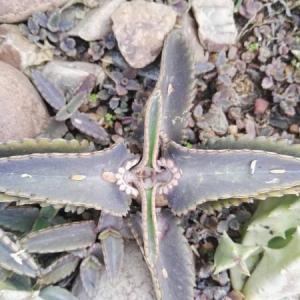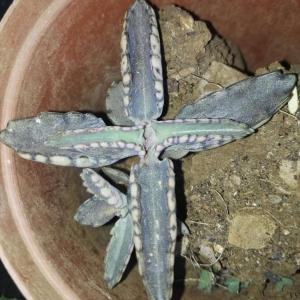文章
Dummer. ゛☀
2017年07月13日

Family - Asteraceae

Flowering - July - September.
Habitat - Cultivated.
Origin - Native to U.S. but probably not Missouri.
Other info. - This showy species can be found growing wild in many parts of North America. The one or two collections from Missouri were probably just remnant plants from cultivated areas. It has not been collected since 1959 in this state. This is an easy species to identify as the papery-white involucre bracts make it distinct from other plants.
A margaritacea is a popular cultivated plant and does well in dried flower arrangements. It was also used medicinally by natives to treat a variety of ailments. A tea of the plant was used to treat colds, coughs, and infections. The leaves were also smoked for throat and lung troubles.


Flowering - July - September.
Habitat - Cultivated.
Origin - Native to U.S. but probably not Missouri.
Other info. - This showy species can be found growing wild in many parts of North America. The one or two collections from Missouri were probably just remnant plants from cultivated areas. It has not been collected since 1959 in this state. This is an easy species to identify as the papery-white involucre bracts make it distinct from other plants.
A margaritacea is a popular cultivated plant and does well in dried flower arrangements. It was also used medicinally by natives to treat a variety of ailments. A tea of the plant was used to treat colds, coughs, and infections. The leaves were also smoked for throat and lung troubles.
0
0
文章
Dummer. ゛☀
2017年07月13日

Family - Liliaceae
Flowering - May - July.
Habitat - Mesic upland forests, lower slopes of ravines, north-facing slopes. Typically on acid substrates.
Origin - Native to U.S.
Other info. - This striking species can be found mainly in the most southern counties of Missouri but a few disjunct populations are found in counties along the Missouri River.
The plant can be identified by its long, thin basal leaves, and its dense, cylindrical inflorescence of many small, white flowers. The pictures above were taken in a recently burned pine-flatwoods so the basal leaves of the plant were missing. Also, the plant pictured above is shown very early in its flowering stage. The inflorescence gets much longer and more cylindrical with time. The flowers also typically change from white to yellow or even purplish with age.
A. muscaetoxicum is a toxic species which contains many alkaloids. Cattle have been killed from eating the plant.
An alternate spelling is Amianthium muscitoxicum.
Flowering - May - July.

Habitat - Mesic upland forests, lower slopes of ravines, north-facing slopes. Typically on acid substrates.
Origin - Native to U.S.
Other info. - This striking species can be found mainly in the most southern counties of Missouri but a few disjunct populations are found in counties along the Missouri River.

The plant can be identified by its long, thin basal leaves, and its dense, cylindrical inflorescence of many small, white flowers. The pictures above were taken in a recently burned pine-flatwoods so the basal leaves of the plant were missing. Also, the plant pictured above is shown very early in its flowering stage. The inflorescence gets much longer and more cylindrical with time. The flowers also typically change from white to yellow or even purplish with age.
A. muscaetoxicum is a toxic species which contains many alkaloids. Cattle have been killed from eating the plant.
An alternate spelling is Amianthium muscitoxicum.
0
0
文章
Dummer. ゛☀
2017年07月13日

Flowering - May - July.
Habitat - Cultivated and uncommonly escaped to waste ground. Also persistent around old homesites.
Origin - Native to southwestern Asia.
Other info. - This is the common "Onion" of culinary fame. This species can be found growing wild in just a handful of Missouri counties but it is cultivated nearly throughout the state. There are many different varieties grown around the world for food and for ornament. Some varieties produce showy flowers, some produce tasty, large bulbs and few to no flowers.
As most of us know by now, cutting an onion can make your eyes tear. The chemical responsible for this is syn-propanethial-S-oxide. To read more about the chemistry of onions, check out this link.
Habitat - Cultivated and uncommonly escaped to waste ground. Also persistent around old homesites.
Origin - Native to southwestern Asia.

Other info. - This is the common "Onion" of culinary fame. This species can be found growing wild in just a handful of Missouri counties but it is cultivated nearly throughout the state. There are many different varieties grown around the world for food and for ornament. Some varieties produce showy flowers, some produce tasty, large bulbs and few to no flowers.

As most of us know by now, cutting an onion can make your eyes tear. The chemical responsible for this is syn-propanethial-S-oxide. To read more about the chemistry of onions, check out this link.
0
0
文章
Dummer. ゛☀
2017年07月13日

Flowering - May - September.
Habitat - Pond margins, creeks, sloughs, marshes, ditches, in mud.
Origin - Native to U.S.
Other info. - This aquatic species can be found scattered throughout much of Missouri but is apparently absent from the northwest quarter of the state. The plant is similar to another, A. subcordatum Raf., but the latter has petals which are equal to or shorter than the sepals and smaller fruits. A. subcordatum is more common in the state.
Plants of this genus are eaten by wildlife such as muskrats. The rhizomes are eaten as well as the leaves. Humans eat the roots as well.
Habitat - Pond margins, creeks, sloughs, marshes, ditches, in mud.

Origin - Native to U.S.
Other info. - This aquatic species can be found scattered throughout much of Missouri but is apparently absent from the northwest quarter of the state. The plant is similar to another, A. subcordatum Raf., but the latter has petals which are equal to or shorter than the sepals and smaller fruits. A. subcordatum is more common in the state.
Plants of this genus are eaten by wildlife such as muskrats. The rhizomes are eaten as well as the leaves. Humans eat the roots as well.

0
0
文章
Dummer. ゛☀
2017年07月12日

Family - Loganiaceae
Stems - No info. yet.
Leaves - No info yet.
Inflorescence - No info yet.
Flowers - No info. yet.
Flowering - June - October.
Habitat - Open, sandy ground.
Origin - Native to U.S.
Other info. - This little species can be found in the "boot-heel" of Missouri and was also collected in Clark County in the extreme northeastern corner of the state. The plant is easy to ID because of its needle-like leaves and minute, white flowers.
Stems - No info. yet.
Leaves - No info yet.
Inflorescence - No info yet.
Flowers - No info. yet.

Flowering - June - October.
Habitat - Open, sandy ground.
Origin - Native to U.S.
Other info. - This little species can be found in the "boot-heel" of Missouri and was also collected in Clark County in the extreme northeastern corner of the state. The plant is easy to ID because of its needle-like leaves and minute, white flowers.
0
0
文章
Dummer. ゛☀
2017年07月11日

Family - Rubiaceae
Stems - No info. yet.
Leaves - No info. yet.
Inflorescence - No info. yet.
Flowers - No info. yet.
Flowering - May - September.
Habitat - Swampy ground, wet woods, ditches.
Origin - Native to U.S.
Other info. - This species can be found in the eastern half of Missouri and mostly in the Ozark region. The plant can be identified in the field by its small white flowers (which normally have 3 lobes) its glabrous fruits, and its whorls of 4-6 thin leaves. G. tinctorium grows in wet habitats, which is also helpful for identification.
Stems - No info. yet.
Leaves - No info. yet.
Inflorescence - No info. yet.

Flowers - No info. yet.

Flowering - May - September.
Habitat - Swampy ground, wet woods, ditches.
Origin - Native to U.S.
Other info. - This species can be found in the eastern half of Missouri and mostly in the Ozark region. The plant can be identified in the field by its small white flowers (which normally have 3 lobes) its glabrous fruits, and its whorls of 4-6 thin leaves. G. tinctorium grows in wet habitats, which is also helpful for identification.
0
0
文章
Dummer. ゛☀
2017年07月11日

Family - Scrophulariaceae
Stems - No info. yet.

Leaves - No info. yet.
Inflorescence - No info. yet.
Flowers - No info. yet.

Flowering - July - October.
Habitat - Wet ground.
Origin - Native to U.S.
Other info. - This striking species can be found scattered throughout Missouri. The plant grows well from seed and would do well in in cultivation as a pond margin plant.
C. glabra is a very variable plant. The leaves may be pubescent or not and have many different shapes. The corollas can range from green to pinkish or white. Steyermark lists several different forms and varieties depending on the factors mentioned above but I won't go into those here.
Stems - No info. yet.

Leaves - No info. yet.
Inflorescence - No info. yet.
Flowers - No info. yet.

Flowering - July - October.
Habitat - Wet ground.
Origin - Native to U.S.
Other info. - This striking species can be found scattered throughout Missouri. The plant grows well from seed and would do well in in cultivation as a pond margin plant.
C. glabra is a very variable plant. The leaves may be pubescent or not and have many different shapes. The corollas can range from green to pinkish or white. Steyermark lists several different forms and varieties depending on the factors mentioned above but I won't go into those here.
0
0
文章
Dummer. ゛☀
2017年07月11日

Family - Caryophyllaceae
Stems - No info yet.
Leaves - No info yet.
Inflorescence - No info yet.
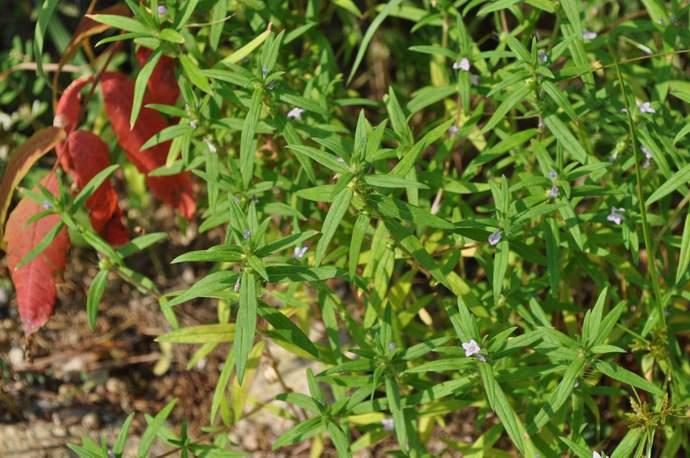
Flowering - March - June.
Habitat - Disturbed sites, lawns, roadsides, railroads.
Origin - Native to Europe.
Other info. - This little annual species can be found in scattered Missouri counties and is becoming more with time.
Many species of Cerastium look alike and can be hard to differentiate. Sometimes minute details such as cilia at the base of the tiny petals are needed to differentiate species. Typically plants need to be collected in both flower and fruit to get a proper identification.
C. brachypetalum can be identified by its annual habit, dense hairs, ciliate-based petals, and long fruiting pedicels. When growing in sunny areas, the plant typically has a distinct grayish appearance. In shady areas, the grayish appearance is mostly absent.
Stems - No info yet.

Leaves - No info yet.
Inflorescence - No info yet.

Flowering - March - June.
Habitat - Disturbed sites, lawns, roadsides, railroads.
Origin - Native to Europe.
Other info. - This little annual species can be found in scattered Missouri counties and is becoming more with time.
Many species of Cerastium look alike and can be hard to differentiate. Sometimes minute details such as cilia at the base of the tiny petals are needed to differentiate species. Typically plants need to be collected in both flower and fruit to get a proper identification.
C. brachypetalum can be identified by its annual habit, dense hairs, ciliate-based petals, and long fruiting pedicels. When growing in sunny areas, the plant typically has a distinct grayish appearance. In shady areas, the grayish appearance is mostly absent.
0
0
dIgfi34ly59
2017年06月27日

Can anyo identify this plant? I live in the Pacific Northwest; this, clearly, isn't a native species, but it was here when I bought the house. The three photos show an overall view, the leafy base, and the budding flowers at the top of the woody stem. This beautiful plant is in a drip-irrigated rock garden.






0
0
求助
Ueca
2017年06月17日

What are the species of these plants?






1
0
Ueca:I suspect that #3 is Sedum dasyphyllum.
Ueca:Thanks for letting me know. 👍 能鉴定植物吗?
熊蘇菲:缺水,水分蒸散太快建議遮網。
求助
Lucky Coyote
2017年06月08日

I got to thinking, could this little gem be a pachyphytum hookeri or another species?
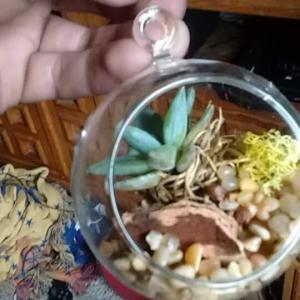
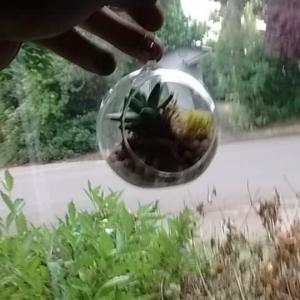


1
0
文章
Alicia
2017年05月22日

Iris are one of the most beautiful and low care flowers that is why they are gardener’s favorite and if you are growing them, learn about the iris companion plants.
There are hundreds of Iris species with different growing needs and if you want to plant iris and its companion plants, first you’ll need to know about the requirements of specific iris species you are growing.
Companion Plants for Iris
While choosing iris companion plants, experiment. Instead of focusing only on the plant’s health, consider about the plants that require similar growing conditions and complement the color and texture of irises you are growing.
Bearded Iris Companion Plants
Companion plants for tall, dwarf and other bearded iris are Columbine, sweet rocket, pyrethrum, blue salvia, coralbells and Narcissus. Lilies, hemerocallis hybrids, penstemons, phlox and chrysanthemums are also used in combination with irises. Some gardeners grow forsythia in poor soil with iris.
Japanese Iris Companion Plants
Japanese iris grows in moist soil, their soil requirement is similar to impatiens. You can grow them in moist to boggy soil. Grow moisture loving plants with Japanese iris like soft rush, tropical sage and impatiens if there is shade, you can also ferns and plants like hosta near it.
Siberian Iris Companion Plants
Siberian irises are cold hardy and low maintenance. They grow in full sun to part shade and thrive in wide range of soil, preferably moist. Grow siberian iris plants in clumps to create a beautiful color contrast with daylilies, marsh spurge, ornamental poppy, lady’s mantle and cranesbill.
Other Iris Companion Plants
Peonies are traditionally companions for irises. If you plant a garden with irises, peonies and roses it will look wonderful. One more plant is forsythia, forsythia not only helps the irises grow, but also provides the beautiful contrast of color. Forsythia flowers herald the arrival of spring and their yellow colored blooms are perfect match for reticulated iris that flowers in the spring as well.
There are hundreds of Iris species with different growing needs and if you want to plant iris and its companion plants, first you’ll need to know about the requirements of specific iris species you are growing.

Companion Plants for Iris
While choosing iris companion plants, experiment. Instead of focusing only on the plant’s health, consider about the plants that require similar growing conditions and complement the color and texture of irises you are growing.
Bearded Iris Companion Plants
Companion plants for tall, dwarf and other bearded iris are Columbine, sweet rocket, pyrethrum, blue salvia, coralbells and Narcissus. Lilies, hemerocallis hybrids, penstemons, phlox and chrysanthemums are also used in combination with irises. Some gardeners grow forsythia in poor soil with iris.
Japanese Iris Companion Plants
Japanese iris grows in moist soil, their soil requirement is similar to impatiens. You can grow them in moist to boggy soil. Grow moisture loving plants with Japanese iris like soft rush, tropical sage and impatiens if there is shade, you can also ferns and plants like hosta near it.
Siberian Iris Companion Plants
Siberian irises are cold hardy and low maintenance. They grow in full sun to part shade and thrive in wide range of soil, preferably moist. Grow siberian iris plants in clumps to create a beautiful color contrast with daylilies, marsh spurge, ornamental poppy, lady’s mantle and cranesbill.
Other Iris Companion Plants
Peonies are traditionally companions for irises. If you plant a garden with irises, peonies and roses it will look wonderful. One more plant is forsythia, forsythia not only helps the irises grow, but also provides the beautiful contrast of color. Forsythia flowers herald the arrival of spring and their yellow colored blooms are perfect match for reticulated iris that flowers in the spring as well.
0
1
求助
Ueca
2017年05月22日

What is the species of this plant?


1
0
Ueca:It now looks like this after I gave it to a friend.
Kyla Hunter:a type of haworthia
Amanda Lynn:Aloe kilifiensis ! 🌿🌱
桃子 奋斗ing💯:芦荟


